Stop creating content one page at a time. Here's how forward-thinking SaaS companies are generating thousands of targeted pages that actually convert.
Ever wonder how companies rank for a ton of keywords, like Zapier, which , while your SaaS company struggles to crack the top 10 for a handful? The answer isn't bigger budgets or more content writers—it's programmatic SEO.
While most companies are still manually crafting blog posts and landing pages one by one, industry leaders are quietly dominating search results through programmatic SEO and automatically generating thousands of highly targeted pages that capture long-tail traffic most businesses never even consider.
If you're running a SaaS company and competitors seem to rank for everything, programmatic SEO is likely their secret weapon. And here's the thing: it's not about gaming the system. It's about systematically addressing user intent at a scale that manual content creation simply can't match.
What Is Programmatic SEO and Why It's Dominating in 2025

Programmatic SEO (pSEO) is the strategic, large-scale creation of web pages through automated processes. It leverages data and predefined templates to target vast arrays of specific, often long-tail keywords. Think of it as content creation on steroids.
The numbers don't lie. Flyhomes grew their organic traffic by 10,737% in just three months by programmatically creating over 425,000 pages. Brainly achieved 522% year-over-year growth with their question-and-answer page strategy. These aren't outliers—they're the new normal for companies that understand how search really works in 2025.
Why Traditional SEO Isn't Enough Anymore
What changed is that search behaviour has become incredibly specific. Users don't just search for "CRM software"—they search for "CRM software for real estate agents with email automation" or "Salesforce integration with Slack for project management."
Traditional SEO targets may be 50-100 keywords. Programmatic SEO targets thousands or tens of thousands of these hyper-specific queries that, collectively, represent massive search volume.
The long-tail revolution is real. While head terms get competitive and expensive, long-tail keywords often have:
- Lower competition and easier ranking opportunities
- Higher conversion intent from more specific searches
- Better ROI potential due to targeted user needs
- More opportunities for niche market domination
Meanwhile, Google's AI Overviews and generative search features are changing how information surfaces. Programmatic content, when properly structured, becomes prime material for AI to reference and cite, giving you visibility even in zero-click scenarios.
The Strategic Foundation: Building Your SEO Architecture
Mastering the Head Term + Modifier Formula
The foundation of successful programmatic SEO lies in identifying scalable keyword patterns. Instead of targeting individual keywords, you're looking for structures that can generate thousands of variations.
Head Terms are your core topics—the main subjects your business addresses. For a project management SaaS, this might be "project management software," "team collaboration tools," or "task tracking systems."
Modifiers create the specificity that users actually search for:
- Industry specifications: "for healthcare," "for e-commerce," "for agencies"
- Company size indicators: "for startups," "for enterprise," "for small business"
- Feature requirements: "with API," "with mobile app," "with reporting"
- Integration needs: "with Salesforce," "with HubSpot," "with Slack"
Real-World Pattern Examples
- Zapier's integration strategy follows the pattern "{Tool A} + {Tool B} integration," creating pages like "Salesforce Slack integration" and "HubSpot Gmail integration." This systematic approach lets them cover virtually every software combination their platform supports.
- G2 uses "{Software A} vs {Software B} for {use case}" to create comprehensive comparisons like "Salesforce vs HubSpot for small business" and "Slack vs Teams for remote work."
- Wise dominates currency searches with "{Currency A} to {Currency B} converter" patterns, covering every possible currency combination with real-time data.
The Data Moat Strategy
The quality and uniqueness of your underlying data determines everything. While competitors can copy your keyword strategy, they can't easily replicate proprietary datasets.
Consider Freightify's approach: instead of generic shipping pages, they created targeted landing pages powered by their unique freight rate database. Pages like "freight rate from Germany to USA by port" leverage data that competitors simply don't have access to. The data itself becomes the competitive advantage.
Implementation: From Strategy to Execution

Phase 1: Strategy & Planning (Weeks 1–4)
Goal: Lay the foundation for a scalable, data-driven content engine.
- Data Inventory & Audit:
Audit your existing website, product, and third-party data to uncover structured content opportunities (e.g., integrations, pricing, locations, SKUs, features, etc.). - Pattern Discovery:
Use keyword tools like Ahrefs, Semrush, or DataForSEO to identify "head term + modifier" combinations that can scale (e.g., "CRM for {industry}" or "{Tool A} + {Tool B} integration"). - Competitor Analysis:
Reverse-engineer successful programmatic content strategies from competitors or similar verticals (Zapier, G2, Wise, etc.). - Platform & Stack Selection:
Choose your CMS (e.g., WordPress with ACF, Webflow + Airtable, or a headless CMS like Strapi), plus automation tools (e.g., Whalesync, Make, Zapier, or custom Python scripts). - Template Strategy:
Define 2–3 initial template types based on intent—comparison, directory, how-to, etc.—and map them to the data available.
Phase 2: Prototype & Test (Weeks 5–8)
Goal: Build a minimum viable system and validate assumptions before full-scale rollout.
- Design Modular Templates:
Create wireframes for each template using your CMS and ensure components are flexible (title, meta, H1, body modules, CTAs, etc.). - Automate Page Generation:
Connect your data source (spreadsheet, Airtable, CMS database) with your CMS via API or integration tool. Auto-generate a pilot batch of 50–100 test pages. - Review & QA:
Check pages for:- Broken data fields
- Duplicate or thin content
- Schema markup
- Load speed & mobile responsiveness
- Set Baselines:
Set up keyword tracking, analytics tagging, and engagement metrics (bounce rate, time on page, CTR). Use Looker Studio (see Looker pricing here) or GA4 dashboards for reporting.
Phase 3: Scale & Optimize (Weeks 9+)
Goal: Launch and refine at scale while driving measurable SEO growth.
- Rollout Strategy:
Deploy content in logical clusters (e.g., by feature, industry, or integration group) to avoid Google indexing too many low-authority pages at once. - Track, Learn, Iterate:
Monitor:- Indexation rate (via Google Search Console)
- Rankings for long-tail variants
- Engagement metrics per template
- Conversion pathways (CRM goal completions)
- Refine with Real Data:
Adjust content variables based on what performs best—e.g., modify intro paragraphs, CTA placements, or data fields that drive clicks. - Expand to New Verticals:
Once one content type or topic cluster performs, use your template to expand to new industries, geographies, or features. - Enhance with AI & Personalization:
Integrate AI-generated enhancements (e.g., descriptions, use cases, summaries) and experiment with location-aware or persona-based variations.
Template Design That Actually Converts
Your page template is the blueprint for thousands of pages. It must balance scalability with user experience, SEO optimization with genuine value.
Essential components include dynamic meta tags that use data variables to create unique titles and descriptions for each page. Structure your headings with H1 tags, incorporating target keywords and an organized H2/H3 hierarchy that guides users through the content logically.
Instead of one universal template, develop multiple variations optimized for different user intents:
- Comparison Template: Emphasizes side-by-side feature analysis
- Review Template: Highlights ratings, pros/cons, and user feedback
- How-To Template: Prioritizes step-by-step instructions and guides
- Directory Template: Focuses on listings, filters, and categorization
Programmatic SEO Platform Comparison: Choosing Your Tech Stack
|
Platform |
Best For |
Complexity |
Scalability |
Key Features |
|
Webflow + Airtable |
Design-focused teams |
Medium |
High |
Visual CMS, easy templates, API integration |
|
WordPress + Custom Fields |
Technical flexibility |
Medium-High |
Very High |
Plugin ecosystem, custom development |
|
Bubble + Zapier |
No-code approach |
Low-Medium |
Medium |
Visual programming, workflow automation |
|
Custom Python Solution |
Maximum control |
High |
Very High |
Complete customization, advanced data processing |
|
Whalesync + CMS |
Quick implementation |
Low |
Medium |
Pre-built sync, multiple CMS options |
Content Generation: The AI + Human Oversight Formula
Modern programmatic SEO leverages AI for scale while maintaining human oversight for quality. The most successful implementations follow a proven workflow:
- Data Processing: Clean and structure source data (often using Python scripts)
- AI Enhancement: Generate unique descriptions, summaries, or contextual content
- Template Population: Merge data with templates using automation tools
- Human Review: Quality assurance for accuracy, relevance, and value
- Performance Monitoring: Track results and iterate based on data
The Python Advantage: While many companies succeed with no-code solutions, those requiring sophisticated data manipulation often turn to custom Python development. Python excels at web scraping, data processing, API integration, and content automation, making it invaluable for complex programmatic SEO implementations that require unique data combinations or real-time information processing.
Real-World Success Stories: What's Actually Working

The Integration Intelligence Play: Zapier's $100M+ Organic Strategy
Zapier's programmatic SEO generates over 16.2 million organic visitors monthly. Their secret? Systematically creating pages for every possible software integration.
What made it work:
- Clear Value Proposition: Each page solves a specific integration problem
- Comprehensive Coverage: 500+ apps × 500+ apps = 250,000+ potential pages
- User-Focused Content: Setup guides, use cases, and real examples
- Strategic Internal Linking: Related integrations drive deeper engagement
The business impact is direct: this organic traffic drives their core business, as users discovering integrations often become paying customers.
The Startup Success Story: 17x Growth in 7 Months
One HR SaaS platform achieved remarkable results by programmatically creating employee handbook pages for major employers. Their strategy involved generating pages like "Employee handbook for [Company Name]" using publicly available information about company policies.
The results were impressive:
- 17x increase in daily clicks
- 1,300% growth in organic traffic
- 200+ articles published using AI with human editing
- Significant domain authority improvement
The lesson? Programmatic SEO works for startups, not just established platforms. The key is finding underserved query patterns in your niche and systematically addressing them with valuable, unique content.
The AI & Automation Advantage: What's Possible in 2025

Where AI Transforms SEO Results
Artificial intelligence isn't just nice-to-have—it's becoming essential for creating programmatic content that stands out in an increasingly crowded digital landscape.
AI excels at content enrichment, generating dynamic descriptions and unique summaries for each page based on data inputs. It can add contextual insights that provide relevant background information and explanations, match content format to specific user search behaviors, and identify potential quality issues before content goes live.
Optimizing for Generative Search: The GEO Advantage
With Google's AI Overviews appearing for around 43% of queries (and up to 74% for how-to searches), optimizing for AI consumption is crucial.
Generative Engine Optimization (GEO) best practices include:
- Use clear question-and-answer formats in templates
- Provide concise factual summaries early in content
- Structure data with organized lists and clear hierarchies
- Include relevant statistics and data points AI can reference
- Ensure all information is accurate and citable
As one expert noted, "Citation is the new click." Being referenced in AI-generated answers builds authority even when users don't visit your site directly.
Avoiding the Pitfalls: Quality vs Quantity Balance
The Thin Content Death Trap
The biggest risk in programmatic SEO is creating pages that offer minimal value, what Google considers "thin content." Each generated page must provide substantial, unique information that genuinely helps users.
Warning signs to avoid:
- Pages that differ only by a single variable like swapping city names
- Content lacking depth or actionable information
- High bounce rates across entire page clusters
- Obviously templated content with minimal customization
Quality assurance solutions involve incorporating multiple unique data points per page, using AI to generate contextual and relevant descriptions, including user-generated content like reviews or testimonials, and providing actionable information rather than just data presentation.
Algorithm Resilience Factors
Sites focusing solely on rankings often struggle with algorithm updates. Building resilience requires prioritizing genuine user value over search engine manipulation.
Resilience indicators include:
- Strong user engagement metrics (time on page, low bounce rates)
- Meaningful conversion performance that drives business results
- Content users actually find helpful and worth sharing
- Technical excellence (fast loading, mobile-friendly, accessible)
Ready to Build Your Programmatic SEO Engine?

The examples we've covered, from Zapier's 1.3M+ keyword dominance to the HR SaaS startup's 17x growth, share one critical element: they didn't happen overnight. Each company started with a strategic foundation, then scaled systematically.
If you're convinced programmatic SEO could transform your SaaS growth (and honestly, the data makes it hard to argue otherwise), here's how to move from concept to implementation without the common pitfalls that derail most attempts.
Phase 1: Foundation Assessment (Week 1)
Before you build anything, you need to understand what you're working with. Most companies skip this step and regret it later.
Data Audit: What structured data do you already have? Product features, integrations, customer segments, pricing tiers, use cases, competitor information, or industry-specific content? The richest programmatic opportunities often hide in data you already possess.
Pattern Research: Use Ahrefs or SEMrush to identify "head term + modifier" patterns in your space. Look for searches like "[your product type] for [industry]" or "[feature] + [integration]" that show consistent search volume across variations.
Competitive Intelligence: Find who's already winning with programmatic content in your space. Tools like Ahrefs' Site Explorer can reveal if competitors have thousands of similar pages ranking for related terms.
Phase 2: Pilot Strategy (Weeks 2-4)
Start small, learn fast, scale smart. The companies that succeed with programmatic SEO validate their approach before committing massive resources.
Template Development: Create one bulletproof template that balances automation with genuine value. Your template is the foundation for thousands of pages—get it right once rather than fixing thousands of pages later.
Platform Selection: Choose based on your team's capabilities, not feature lists:
- Technical Teams: Custom Python + headless CMS for maximum control
- Marketing-Led Teams: Webflow + Airtable for visual control with automation
- Quick Validation: WordPress + Advanced Custom Fields for proven scalability
Pilot Batch: Generate 50-100 test pages using your template. This sample size lets you identify template issues, test user engagement, and validate your keyword targeting before scaling.
Phase 3: Scale and Optimize (Ongoing)
This is where most implementations either accelerate or stall. Success requires treating programmatic SEO as a system, not a one-time project.
Phased Rollout: Deploy content in logical clusters—by industry, feature set, or integration type. This approach helps Google understand your content patterns while preventing indexation issues that can hurt smaller batches.
Performance Monitoring: Track metrics that matter: indexation rates (via Search Console), engagement depth (time on page, bounce rate), and business impact (leads, conversions, pipeline). Vanity traffic metrics don't pay the bills.
Continuous Optimization: The most successful implementations treat their initial launch as version 1.0. Regular template refinements, content enhancements, and new data integration opportunities separate winning strategies from stagnant ones.
Investment Considerations
Programmatic SEO scales efficiently, but initial investment varies significantly based on ambition and existing capabilities:
Validation Phase ($3,000-8,000): Pilot implementation with no-code tools, basic template development, and essential monitoring. Perfect for testing viability before larger commitments.
Growth Phase ($15,000-40,000): Custom development, AI content enhancement, comprehensive data processing, and advanced analytics. Most SaaS companies find this level delivers meaningful competitive advantage.
Market Domination ($75,000+): Enterprise-level implementation with real-time data integration, advanced personalization, and dedicated optimization resources. Reserved for companies ready to own their category's search landscape.
The investment isn't just in technology, it's in competitive positioning. While competitors manually create content, you're systematically capturing search opportunities they'll never discover.
Your Competitive Advantage Starts Now
Programmatic SEO success requires more than understanding the concept—it demands strategic execution tailored to your specific data assets and market opportunities.
Start by auditing what unique data you already possess. That integration list, customer segment breakdown, or feature matrix might be your competitive moat in disguise. The companies dominating search results in 2025 found ways to turn their proprietary information into systematic content advantages.
The question isn't whether programmatic SEO will become table stakes for SaaS growth—it already is among industry leaders. The question is whether you'll implement it before your competitors figure it out.
Need help implementing programmatic SEO for your SaaS company? Our team specializes in helping technical businesses build scalable content strategies that drive measurable results. From data structuring and template design to AI-powered content generation, we've helped companies achieve dramatic organic growth through strategic programmatic implementation.

Ulf Lonegren
Ulf Lonegren is CEO and Co-Founder of Roketto, where he has led digital marketing strategy for over 15 years. With extensive experience in both traditional SEO and emerging AI search optimization, Ulf has guided hundreds of SaaS and ecommerce companies through major search algorithm updates and platform shifts. His expertise spans from the early days of Google's algorithm changes through the current AI revolution, giving him unique insight into what actually drives sustainable search visibility. Ulf's approach focuses on fundamental optimization principles that adapt to new technologies rather than chasing trending acronyms, a philosophy that has helped Roketto's clients achieve measurable growth across multiple search paradigm shifts.











2.png)
2.png)









